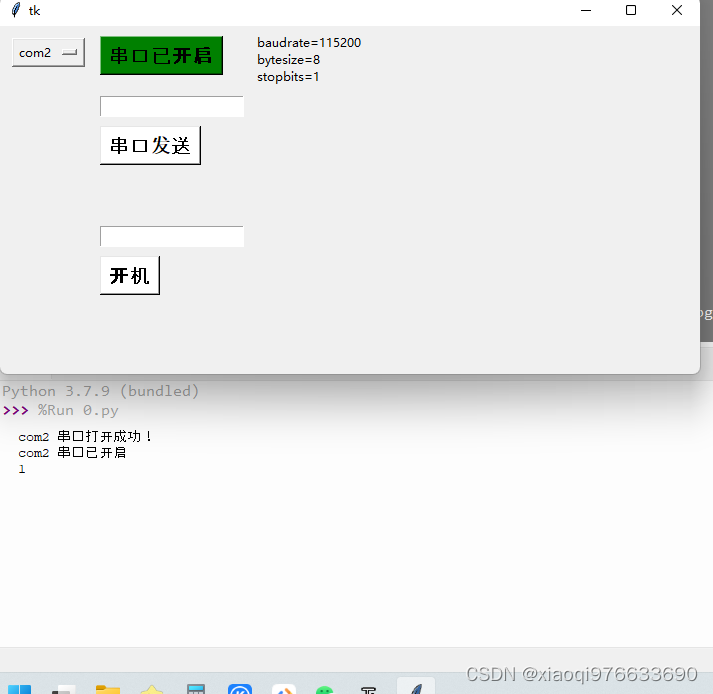from tkinter import *
import tkinter as tk
from tkinter.messagebox import *
import serial
from time import sleep
import serial.tools.list_ports
ser = serial.Serial()
win = Tk()
win.geometry("700x350")
a=0
def update_text():
global a
a = int(a) + 1
if (var.get()==''):
print('请选择要开启的串口')
result = showerror('错误', '请选择要开启的串口')
print(f'错误: {result}')
a=0
else :
if (a==1) :
port_open_recv()
button.configure(text="串口已开启",font=('Helvetica 14 bold'),bg='green')
print(var.get(),"串口已开启")
print(a)
if (a==2):
port_close()
button.configure(text="串口已关闭",font=('Helvetica 14 bold'),bg='red')
print(var.get(),"串口已关闭")
print(a)
a=0
class var_send:
num=0
def send_buff():
send(entry_send_value.get())
send('\n')
print('var_send:',entry_send_value.get())
def send_buff_0():
send('0\n')
print('var_send:',entry_value.get())
def port_open_recv():
ser.timeout=0.01
ser.port=var.get()
ser.baudrate=115200
ser.bytesize=8
ser.stopbits=1
ser.parity="N"
ser.open()
if(ser.isOpen()):
print(ser.port,"串口打开成功!")
else:
print("串口打开失败!")
def serload(ser):
while True:
if ser.in_waiting:
str1 = ser.readline().decode('GBK')
print(str1)
def port_close():
ser.close()
if(ser.isOpen()):
print("串口关闭失败!")
else:
print("串口关闭成功!")
def send(send_data):
if(ser.isOpen()):
ser.write(send_data.encode('utf-8'))
print("发送成功",send_data)
else:
print("发送失败!")
var=StringVar()
var.set("com2")
op1=OptionMenu(win,var,'com10','com2','com3','com4','com5','com6','com7','com8','com9','com10','com11','com12','com13','com14','com15')
op1.place(x=10, y=10)
button=Button(win, text="串口已关闭", command=update_text,font=('Helvetica 14 bold'),bg='red')
button.place(x=100, y=10)
send_button=Button(win, text="串口发送", command=send_buff,font=('Helvetica 14 bold'),bg='white')
send_button.place(x=100, y=100)
send_button=Button(win, text="开机", command=send_buff_0,font=('Helvetica 14 bold'),bg='white')
send_button.place(x=100, y=230)
text11=Label(win,text=" baudrate=115200\n bytesize=8\n stopbits=1\n",justify=LEFT)
text11.place(x=250, y=5)
entry_send_value=Entry(win)
entry_send_value.place(x=100, y=70)
entry_value=Entry(win)
entry_value.place(x=100, y=200)
def receive_buff():
if(ser.isOpen()):
com_input=ser.readline(200)
if com_input :
print(com_input.decode('utf-8'))
win.after (100,receive_buff)
win.after (100,receive_buff)
win.mainloop()
























 656
656











 被折叠的 条评论
为什么被折叠?
被折叠的 条评论
为什么被折叠?










